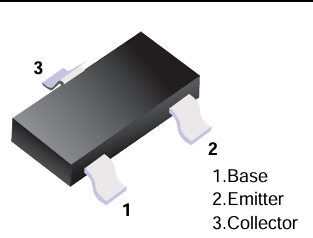Date:2025-06-10 Categories:Product knowledge Hits:290 From:Guangdong Youfeng Microelectronics Co., Ltd
Coupling Capacitor Selection: Calculate C such that its reactance (XC = 1/(2πfC)) is <10% of the input impedance at the lowest frequency. For f = 20Hz and input impedance = 1kΩ, C ≥ 1/(2π×20×100) ≈ 79.6μF (use 100μF electrolytic). Small Signal Transistors
DC Blocking: Ensure capacitors are polarized correctly (electrolytics for low-frequency; ceramic for RF).
Base Drive Strength: For fast switching, use a low-value base resistor (e.g., 100Ω) to reduce turn-on time, but add a parallel resistor (10kΩ) to discharge the base capacitance during turn-off. Small Signal Transistors
Snubber Circuits: Across inductive loads (e.g., relays), place an RC snubber (100Ω + 0.1μF) or TVS diode to suppress voltage spikes that could damage the transistor.
Bias for Minimum Noise Figure: For transistors like 2N3904, the minimum noise figure occurs at IC ≈ 1–2mA. Use a current source bias instead of resistive biasing for stability.
Grounding Techniques: Star grounding for signal paths; keep input traces short and away from high-current lines to minimize pickup. Small Signal Transistors
Ferromagnetic Beads: Place a bead (100Ω at 100MHz) in the collector lead to attenuate high-frequency switching harmonics.
EMI-Compliant Layout: Route feedback capacitors close to the transistor leads and use ground planes for shielding.

Previous: Classification, Structure, and Principle of MOSFET